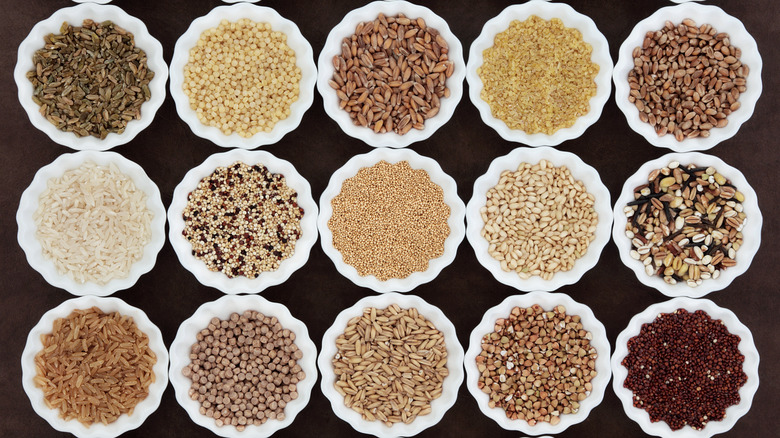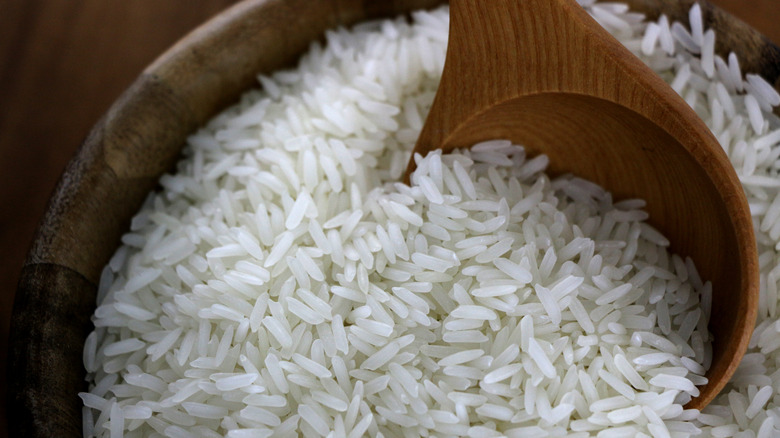Whole Grains Versus Refined Grains: What's The Difference?
You have probably heard that whole grains are better for your health than refined grains, but how are they different? Simply put, whole grains contain the entire grain kernel. A kernel includes the bran, the endosperm, and the germ. All three parts of the grain offer health benefits, according to Harvard Health Publishing. Bran is the outer layer of a grain, and it provides fiber, iron, copper, zinc, magnesium, and antioxidants. The endosperm is the middle of the grain and it contains protein, minerals, and B vitamins. Inside the endosperm is the germ, which is a source of vitamin E and healthy fats.
Examples of whole grains include brown and wild rice, quinoa, amaranth, buckwheat, oats, and barley. Because some foods labeled "whole grain" are not healthy, you should look for products that have high amounts of fiber and very few ingredients, steering clear of any that include trans fat, sugar, and sodium.
Refined grains are processed
A refined grain has undergone a process to remove the bran and germ, ultimately removing most of the nutritional parts. Examples of refined grains include white rice, white bread, and de-germed cornmeal. Because refined grains have been stripped of their nutrition, many are enriched with some vitamins (via United States Department of Agriculture).
The kinds of grains you eat can impact your health. Eating whole grains can help lower levels of LDL, or "bad" types of cholesterol, according to research published in the American Journal of Clinical Nutrition. You might also lower your risk of developing diabetes by replacing refined grains with whole ones. A study published in the Archives of Internal Medicine showed that switching to whole grains lowered the risk of type 2 diabetes by around 36%. In addition, Harvard Health Publishing notes that the fiber in whole grains improves digestion and gut health.


